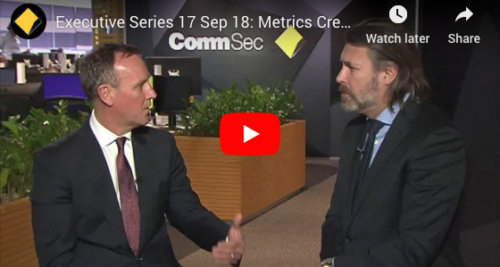Learning to walk: What happened when democratisation hit private debt
A new trend is emerging in the Australian financial landscape, as more and more ordinary investors searching for yield are turning to private debt to get more bang for their buck.
Often referred to as the democratisation of private debt, the trend is being driven by the growing availability of online platforms that allow investors to easily access private debt opportunities.
Democratisation is hardly a new concept, whether it comes through the introduction of the printing press in the 15th century or the internet ushering in the information age, providing greater accessibility to more people can cause massive shifts in short order.
However, while greater access to information can lead to a more knowledgeable populace, so too can it lead to a shunning of expert opinion.
After all, a little knowledge is a dangerous thing.
While this is evident in the proliferation of conspiracy theories about everything from the flat earthers, to COVID-deniers, it also finds roots in the world of financial services. The rise of finfluencers is causing concern across the industry, with ASIC cracking down on the practice to ensure investors aren’t being led astray.
With private debt — once the exclusive preserve of large institutional investors — gaining traction in the broader market, advisers are being told to ensure their clients aren’t getting ahead of themselves before they understand the risk/reward profile.
There are a lot of factors that are working together to create greater interest in private debt investments, but the primary driver extends back to the global financial crisis (GFC). The GFC forced banks to re-evaluate their lending practices and lean more conservatively, which restricted access to credit.
Coupled with the Reserve Bank (RBA) rapidly slashing rates to stimulate economic growth, investors had to look to alternative investments in their search for yield.
Enter private debt.
As Andrew Lockhart, managing partner of Metrics Credit Partners, puts it: “It’s a natural response to the market structure in Australia, and the regulatory environment.”
“Australia doesn’t have a bond market of any size or scale. Most companies that want to borrow money or raise debt financing are reliant on the banks for funding, and they don’t go out and issue a bond,” Mr Lockhart says.
“The second thing is most Australian companies are unrated. Moody’s or S&P haven’t undertaken a credit rating and then rated them. You are a captive to the banks. Then as a result of the GFC where all of a sudden, the banks are facing into a changing regulatory environment, and part of that was to require them to allocate capital based on the credit quality of their assets.
“What’s actually ended up happening is that the banks can’t generate the required return for shareholders’ funds from lending money to big companies. So, these companies have looked around and tried to find access to financing and outside of the banks and it didn’t really exist.”
Erryn Lloyd-Jones, partner – capital and corporate advisory at Prime Financial Group, adds: “One of the reasons private debt has become more appealing over recent months, and in fact, the last couple of years, is clients are eager to remove the volatility in returns but still achieve returns that are over and above what you would get from a conservative portfolio investment, say investment grade bonds or a managed fund.
“Private debt gives you that certainty, it gives you a minimum return. Plus, it can potentially give you upside, depending on the structure that the deal has.”
The current surge towards private debt is not just being driven by the remnants of the GFC. The current economic climate is rapidly shifting, with the RBA embarking on an aggressive hiking cycle for the first time in 11 years since May 2022 to combat inflationary pressures.
Among the investments that can thrive in the face of increasing rates is private debt.
“You’ve got an environment with high inflation and people are looking to as best they can maintain purchasing power in their investments,” Mr Lloyd-Jones says.
“What private debt allows you to do is actually have a return profile that’s linked to a base rate which moves with the RBA central bank rate. If the inflation rate continues to increase, base rates will generally follow that. It gives you, to some degree, an inflation hedge that can keep up with inflation through a private debt structure.”
Investors are also attempting to replace their eroding real returns in today’s volatile environment.
Investment assets such as bonds, particularly long-dated bonds purchased last year ahead of the RBA’s current hiking cycle, are now returning a loss.
“If you had invested in any long-dated government bond, corporate bond, doesn’t really matter what it was; if you invested at a fixed, long-term coupon, your bond will be heavily underwater now,” Mr Lloyd-Jones says.
“Say, you signed the contract with someone who said I will pay you 4 per cent per annum for the next 10 years for the pleasure of taking your $100 million dollars. Right now, that 4 per cent looks pretty awful in an environment where better rated credits are paying 6–7 per cent.
“Your real return is being eroded by inflation. If you had invested in an investment grade bond, 10-year maturity, say 18 months ago, your total return on that bond would have been 4 per cent. The current inflation rate is close to 8 per cent. So, you are getting a negative 4 per cent return on that bond in real terms and your purchasing power is being eroded by holding that bond. That happened to the entire market.”
Mr Lockhart adds that the low returns from “safe” investments leave many looking beyond the banks.
“People take the view that it’s okay, the government provides the bank a guarantee for the first $250,000, so it’s safe, but of course the trade-off is safe does not get paid for in terms of the return,” he says.
“I think if you look at the growth of self-managed super funds, it has been astounding growth in demand for people to operate their own self-managed super funds, but a lot of those people still put money on term deposit or in cash, and they’re not really getting paid a very good return.”
But while private debt might sound pretty attractive, there are a lot of other factors to consider.
As with every investment decision, it’s important to understand what you are doing.
The defining feature of democratisation is opening something up to a wider audience. In the case of private debt, this means enabling a broader base of investors to access the asset class. But how exactly does this happen?
The simple answer is breaking up the funding into smaller amounts. The way this gets done, however, can take a few different forms.
Within a managed fund, investors have access to a range of loans that are bundled together to increase diversity and reduce risk. While private debt is typically an illiquid asset, which may not be appealing to all investors. Mr Lockhart explains that there are alternatives that provide greater flexibility.
“If I lend money to you, and you’re a company, I can’t really get my money back. You, as the borrower, want to know that you have access to financing for five years, but that doesn’t necessarily suit an investor,” he says.
“What we had to do was create a vehicle where you could lend money to a company for say three or five years, but the investors could get access to their money through trading it on the ASX, for instance, so they can buy and sell the product on the exchange, and they get almost immediate liquidity.
Having a fund listed on the ASX gives retail and self-managed super fund investors access to the asset class in a more liquid form. Mr Lockhart adds that there are also options to receive monthly income, depending on the structure and the investor’s needs.
However, listing on an exchange also exposes private debt to the same market risks as other assets.
Mr Lockhart warns that if too many people try to sell, the price of the units may decrease even if the loan is still performing well.
On the other end are the unlisted funds, which operate in much the same way but without the liquidity.
“What you tend to find is that, unfortunately, the access to the market is a little bit limited by the platforms. For instance, a lot of the financial advisers and those that run SMAs they will say they need daily liquidity to rebalance their portfolio,” Mr Lockhart says.
“Well, private debt doesn’t quite deliver that. It’s not like an exchange traded share or an exchange traded bond or a hybrid where people can buy and sell on a daily basis.”
Ultimately, much of the importance comes down to the actual manager. With the space opening to ever increasing numbers of investors, some with less experience and understanding, advisers should be ensuring that the managed funds they recommend are being well run.
“It’s all great that people can have access to private debt. But the real trick to it is understanding how good the manager is in terms of their track record. Have they incurred losses? Have they met returns? Can they deploy the capital? Have they got good relationships?” Mr Lockhart says.
“It’s an asset class where you need to do the due diligence on the manager and the skill set. So, it’s great to have access, but does access also lead to potential for higher risk or adverse investor outcomes? Does the manager operate under a proper governance system? Do they invest in responsible investment opportunities?”
Mr Lloyd-Jones agrees, noting that “whoever’s putting the deal together should be a very seasoned long-term career banker.”
“You’ll find a lot of people have got into this profession over the last few years. They’re having a crack, they’re putting deals together. They don’t really know what can go wrong.
“You want to really eyeball and interview the manager on a personal level. Do they know what they’re talking about? Are they prepared to answer the tough questions?”
On the other end of the spectrum is a much more personalised version of private debt known as deal-by-deal which provides investors with a greater level of transparency because it is a single, generally higher value transaction.
Deal-by-deal private debt is often used by high-net-worth individuals and family offices, but it can also be accessed through syndication.
“What can be done through syndication is individualise loans or bond investments to a denomination as low as $1,000 or $10,000. Which, you talk about democratising private debt, that is what it is — breaking it down into very small parcels, making those high yielding, safer investments available to a broader group of investors,” Mr Lloyd-Jones says.
Unlike the managed fund option, there is a great deal of transparency involved on a deal-by-deal basis, with investors able to scrutinise the details of the deal.
“There’s a manager spread that occurs through a fund solution where they’re investing in a whole range of mandated investments versus a deal-by-deal fundraising where each investor gets to select what investments they want to make,” Mr Lloyd-Jones says.
“Do they want to invest in this business because it agrees with their ESG principles, or do they want to not invest in this business because it conflicts with their ESG principles? So, direct private investing gives investors the power to select what businesses they want to support and can drive their ESG outcomes or preferences, which is actually a big thing.
“If the investor doesn’t understand the investment, they shouldn’t be doing it,” he cautions.
Mr Lloyd-Jones notes that deal-by-deal private debt is a much more hands-on investment compared to a managed fund.
While he acknowledges that returns can be more attractive, he also emphasises that it requires a more significant investment of time.
“The reality is, people shouldn’t be going into private debt on a deal-by-deal basis, unless they want to invest the time to understand the transactions. It’s a hands-on investment. And a lot of people actually get intellectual stimulation and enjoyment out of investing in private debt on a deal-by-deal basis,” Mr Lloyd-Jones says.
“I guess democratising at the moment is probably through a fund solution right now.”
Defaults are among the biggest risks in private debt.
No matter the type of private debt, there is always a risk that the debtor will be unable to service the loan or will become insolvent.
In a climate of rising interest rates and high inflation, the risk of business defaults increases. Although both managed funds and individual deals handle this risk differently, both can minimise the damage a default can cause.
“The important thing about private debt is that it ranks ahead of equity. In a liquidation, you’re going to receive your money before equity gets paid,” Mr Lloyd-Jones says.
“Depending on what type of private debt investment you choose to make, you could be investing in senior debt, junior debt, or what we call subordinated debt, but you’re still debt, you still rank ahead of equity. This is an important distinction that in a complete liquidation of the company in a complete meltdown of a business, hopefully there’s some assets to sell and you are first in line.”
For managed funds, investors can reduce risks because the risk is spread across the entire portfolio of loans in the fund. Although a single loan default will have an impact on the fund, it won’t be as severe as in a single deal.
As with deal-by-deal private debt, managed funds are also able to take security over the loan.
“When we take security, it’s about making sure that our borrower performs. If they fail to perform, we will move to take control of the position, wiping out the shareholders and preserving our investors’ capital,” Mr Lockhart says.
“In the context of other assets, you can’t do that if you’re a shareholder as an equity investor. Most bond funds don’t have the skill set to manage a workout or a restructure, they’re heavily reliant on just market conditions.”
The ever-changing market conditions over the past year won’t just have short-term effects on investors, and private debt investment offers alternative options to counteract the drop in yield.
However, the private debt market in Australia is still very nascent relative to the US and European markets.
“I think the main thing is you have to understand that this still remains a bank-dominated market,” Mr Lockhart says.
“The banks are by far the most dominant players, but over time, we think they will continue to reduce and cede market share as more private players enter the market, but I don’t think you’re going to find that there’s going to be 100 private debt managers operating in the Australian market. It’s going to be more conservative. That would be my sense.”
Mr Lloyd-Jones compares the current market to a toddler, just finding its feet, with a long way to go before it reaches maturity.
“We are very, very early into this phase. If I go back five years ago, it was a newborn baby, and it’s a toddler now,” he says.
“We are so early into this fight, and if you follow the global trends on private debt, lending versus bank market lending, it’s still even, though it’s gone from say a 95/5 split, to maybe 60/40. The European and US markets are probably more 80 per cent private and 20 per cent bank. We are slowly catching up with the rest of the world.
“I think over time, more and more investors will want to get exposure to this asset class as they understand it better.”
Other News
Podcast: The Rules of Investing | From Cold Call to Capital Giant
In this episode of The Rules of Investing, Metrics Group CEO & Managing Partner, Andrew Lockhart discusses the conditions that…
Metrics Credit Partners Completes Acquisition of Taurus and BC Invest
Metrics Credit Partners (“Metrics”), a leading Australian based alternative asset management firm, has today successfully completed the acquisition of Taurus…
INSIGHTS
MCP Income Opportunities Trust (MOT) lists on ASX
Sydney, 29 April 2019: The Trust Company (RE Services) Limited (ABN 45 003 278 831) (Responsible Entity) is the responsible…
MCP Master Income Trust wins Lonsec Listed Fund Award
The award came a year after MXT was listed on the Australian Securities Exchange






